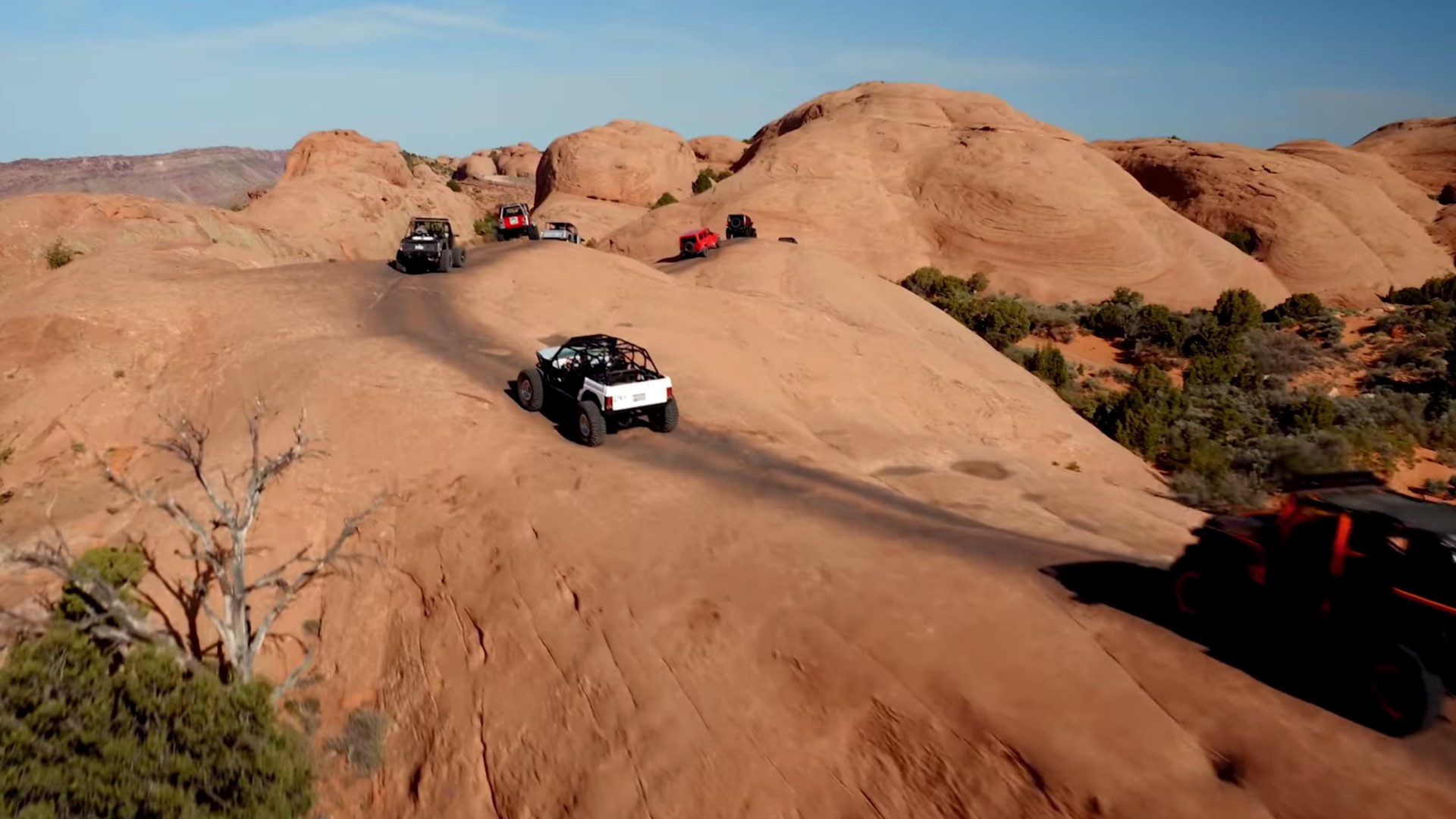

We may earn revenue from the products available on this page and participate in affiliate programs. Learn more ›
The brown-and-orange landscape that is Moab, Utah stands as every off-roader’s dreamland. Jeep enthusiasts and other four-wheelers flock to America’s West to tackle obstacles like Hell’s Revenge in their terrain-conquering trucks, painting the 5,000-person town as some sort of utopia. It’s been that way for over 50 years, but like all good things in 2020, Moab as it’s known might soon come to an end thanks to the oil-and-gas industry.
Oh, and the Mineral Leasing Act of 1920. That’s the legislation that makes it possible for companies like Prairie Hills Oil and Gas to use parcels of public land for drilling purposes. North Dakota-based lawyer Craig Larson looks to be at the front of this charge, as The New Yorker explains his proposal to lease a chunk of territory between Arches and Canyonlands National Park.
Larson and Prairie Hills are tied together as the latter is headquartered in a home co-owned by the lawyer in Big Lake, Minnesota, about 40 miles northwest of Minneapolis, the story says.
The land acquisition process is outdated, to say the least. Under the Mineral Leasing Act of 1920, anyone can nominate a piece of public land for gas and oil development—even anonymously. It’s free to do so and following a review by the Bureau of Land Management, the parcel can then be sent to a lease auction where the highest bidder is awarded usage rights.
While Prairie Hills nominated the piece of land—which is going to auction in September—anyone who offers up the most cash can take charge of it.

Perhaps the most staggering piece of info is just how cheap a company can walk out with a swath of public land. The minimum competitive bid is marked at two dollars per acre, which is actually a realistic going price in places like Moab. The lease then has a term of 10 years, of which the first five carry an annual renting fee of $1.50. That fee is bumped up to $2 for the term’s second half, meaning a 100-acre purchase would result in a payment of $520 to the Bureau of Land Management.
If the company uses the land for oil and gas drilling, then it must also pay a 12.5 percent royalty on production to the government. It is possible that a firm could simply lock-in a lease agreement and leave the land undeveloped, though Prairie Hills and Larson are tight-lipped about their plans.
The effect this could have on Moab and surrounding areas is clear. Anytime you drill into the earth, it disrupts the existing ecosystem. This damages the environment, first and foremost, and Moab’s is one that’s known for its great natural beauty. Clear skies provide one of North America’s greatest views of the Milky Way, which isn’t likely to be helped by burning petroleum.
In turn, this could hamper the town’s tourist industry which has already taken a hit due to the pandemic. Nature junkies, whether they be hikers or off-roaders, could be turned away by the divisive resource-harvesting practices. Not to mention the locals, many of which are Native and have long voiced their anguish against Big Oil.
Frustratingly, this effort to commandeer land that’s long been enjoyed by hobbyists nationwide is everything but illegal. Time will tell if it is indeed turned over to Prairie Hills Oil and Gas, or another firm, though it will seemingly take a dedicated team of conservationists to put a stop to it.
The New Yorker article is worth a read in full. Let us know your thoughts on the matter in the comments.
Got a tip? Send us a note: tips@thedrive.com
